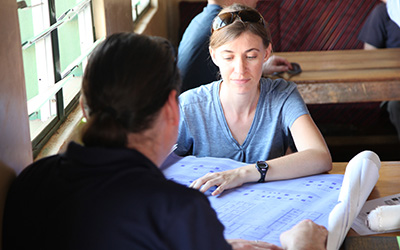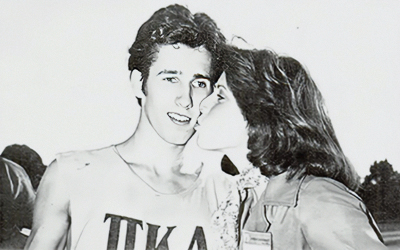The Miller Center’s “farm to fork” approach to poultry science breeds innovation in Alabama and around the world
By Shelley Wunder-Smith ’96

On the far edge of Auburn University’s campus, about seven miles from Toomer’s Corner, sits a cutting-edge poultry science research farm. Housed on the farm’s 30 acres are the Alabama Poultry Hall of Fame, the National Poultry Technology Center, the Poultry Infectious Disease Biocontainment Research Facility and the Alabama Poultry and Egg Association Feed Mill and Animal Nutrition Building, along with several poultry houses, a hatchery, a processing plant and kitchen and an administrative building.
While the rustic campus is out of sight of many Auburn travelers, it’s not out of mind for anyone who deals with chickens for a living. Thanks to these facilities, Auburn’s Department of Poultry Science—one of just six in the U.S.—has cemented its global reputation as an authoritative voice for innovation in the industry. And it’s all named for one particular alumnus as the Charles C. Miller Jr. Poultry Research and Education Center.
In the 1950s and ’60s, Charles C. Miller Jr. helped pioneer efficient approaches to poultry farming and production that allowed it to become the mammoth agribusiness it is today. In 2021, the U.S. produced 9.13 billion broilers—chickens raised for meat—at a value of $31.5 billion. The country’s “Broiler Belt” extends up the East Coast to Pennsylvania and sweeps across the South westward, into Texas and Oklahoma. In Alabama alone, 22 million chickens are processed each week, a pace second only to Georgia. The state’s entire poultry industry has an annual economic impact of more than $15 billion and supports 86,000-plus jobs.
But these giant stats grew from humble beginnings.
Hatching The Modern Poultry Industry
“In the 1950s and ‘60s, chickens were mostly raised on small row-crop farms, around 40-50 acres, by farmers who had two or so houses on their land,” explains Ray Hilburn ’78. He would know. “My dad raised chickens, and we would collect the eggs by hand, wipe them down with rags and sandpaper, and pack them for sale. It took hours.”
Like their father, Hilburn’s four older brothers went into the poultry industry. After some initial reluctance—“When I left for Auburn, I told my dad I never wanted to see another chicken”— Hilburn followed suit. He currently serves as associate director of the Alabama Poultry and Egg Association (AP&EA). He remembers his dad regularly doing business with Charles Miller.
In 1938, Miller graduated from what was then Alabama Polytechnic Institute with a degree in textile engineering, followed by a degree in agricultural business and economics in 1940. After returning from World War II with a Purple Heart, Bronze Star and Silver Star, Miller married, started his family and began implementing on his own farm many revolutionary approaches that led to vertical integration throughout the poultry industry.
Going Vertical
In 1946, Miller opened a feed-and-seed store in Piedmont, Ala. After that, the modernized practices he implemented in the poultry industry—and the business success that followed— occurred quickly.
He built a small feed mill in 1952, then a larger one three years later, and began making his own feed. In 1954, Miller introduced a new approach: a grower contract that provided farmers with a measure of financial security, while they raised his chicks on their land and in their poultry houses. He gradually built up to 40 breeder houses and a hatchery. Eventually, Miller Poultry and Feed Co. employed 250 people.
Today, large commercial companies such as Tyson Foods and Perdue operate on a similar system now known as “vertical integration.” They contract with individual farmers to grow and maintain healthy flocks of chickens until the broilers are big enough to be processed as meat. This takes place on the farmer’s property, inside increasingly technologically sophisticated (and expensive) poultry houses paid for by the farmer. The company owns everything else, including the hatcheries, feed mill, processing plants and the chickens themselves.
It’s a long way from the uncertainty of the old days. “This transition in the poultry business was good for farmers,” Hilburn noted in a 2015 Growing America feature.
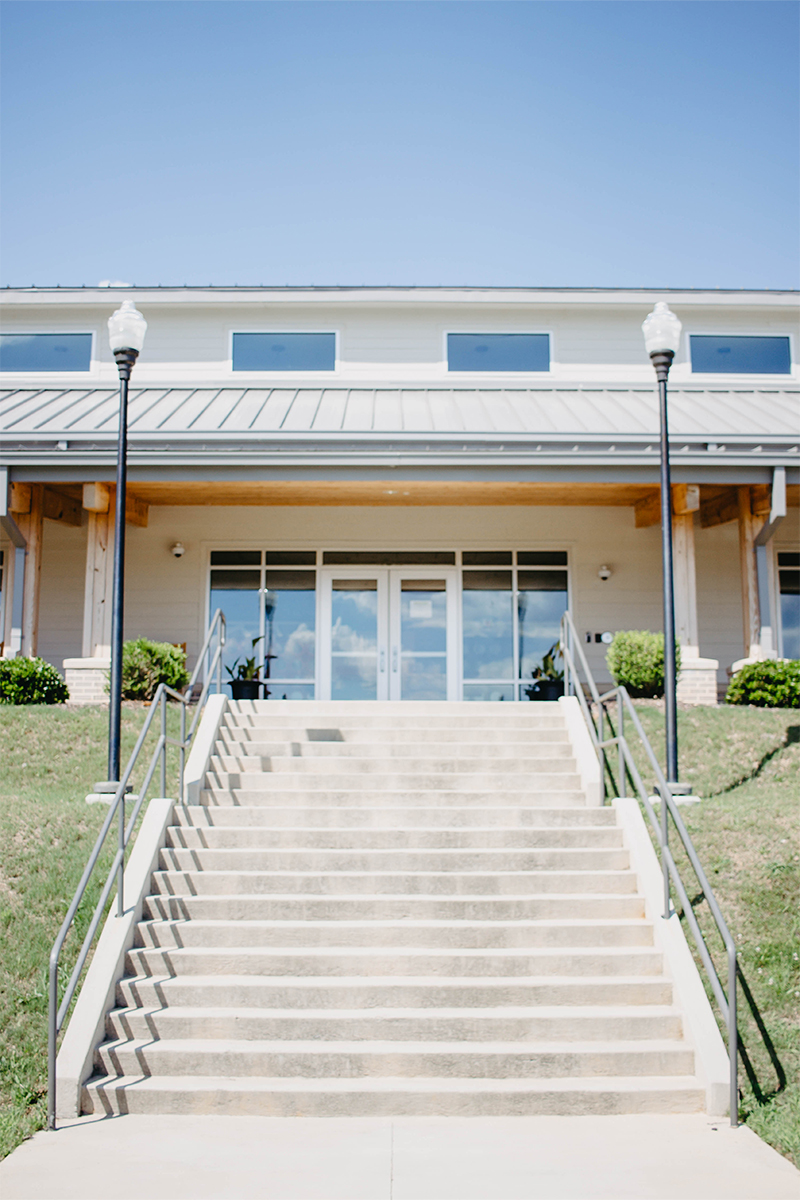
Entrance to the main building at the Miller Center.
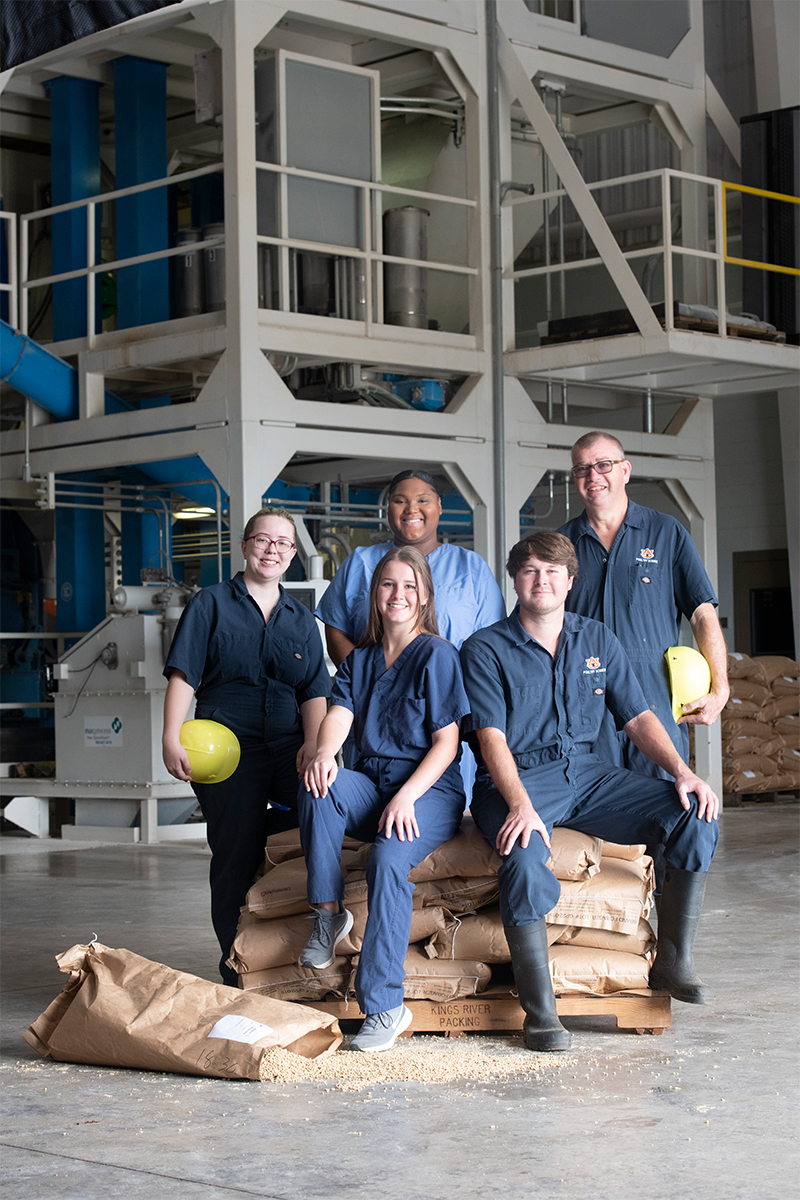
The Miller Center’s workers include students and employees. (Standing L-R) Freshman Bridget Foster, senior Kyndal Staley and agricultural technician John Jones. (Sitting) Seniors Cayce Maggard and Jacob White.
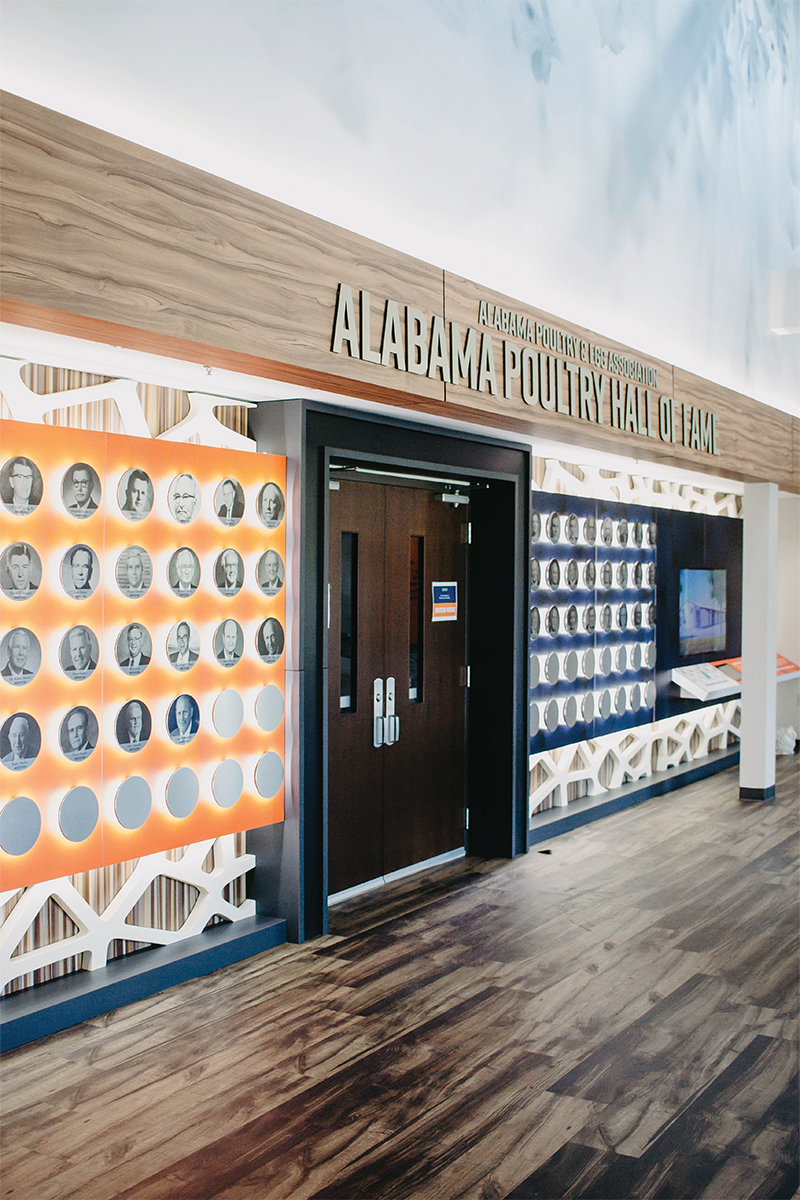
The Miller Center is home to the Alabama Poultry Hall of Fame.
Growing Into The Miller Center
Vertical integration was good, and not just for chicken farmers; it enabled the whole industry to grow exponentially. Nationally, the entire poultry enterprise—farmers, processing and production, and allied industries like feed manufacturers and equipment sales—generates more than 2.1 million jobs. You would think that job placement would be easy, with only six university poultry science departments sending graduates into a high-demand industry.
But by 2005 it was clear that Auburn students were falling behind their counterparts from other schools, in part because they trained on outdated equipment at the Poultry Research Farm Unit. The old poultry farm was built in the 1980s near S. College Street, on what has become prime real estate adjacent to the Auburn Research Park.
“This is a multibillion-dollar industry that has only six universities seeding new employees into it, and we felt like our students weren’t getting what they needed to be competitive,” explains Hilburn. “Students graduating from Texas A&M, North Carolina State and UGA had the benefit of a lot of money put into their poultry facilities. So we really started pushing for this new research center.”
The AP&EA encouraged its members to contribute to the prospective research center. Major companies within the poultry industry donated to the project. In 2015, Miller’s son and daughter-in-law, Charles C. “Buddy” Miller III and Pinney Allen, made a significant gift to the new research complex.
Completed in 2021, the Miller Center site contains the whole poultry production operation.
These are high-end facilities where we are able to take students through the entire farm-to-fork—or production to consumption—approach,” says Bill Dozier, head of the Poultry Science Department and executive director of the Miller Center. “Students can begin in the hatchery and end in the 20,000-square-foot processing plant. The Miller Center is one of the premiere poultry science education centers in the world.”
Such an innovative facility serves as a fitting tribute to Charles Miller’s own trailblazing approach and represents the fruition of his vertically integrated operation model. The center is already making an impact on both Auburn students and the industry.

The Future of Feathers
“I’m from Gainesville, Ga., the poultry capital of the world,” says Leah Smith. She’s a current fourth-year student studying poultry science at Auburn. “My dad builds and equips chicken houses, both in Georgia and in Central and South America. He doesn’t work for an integrator; this is more of an allied industry.”
Even though the University of Georgia has a poultry science program, Smith decided to attend Auburn.
“I knew poultry would be a great industry for me. So when I heard about the Miller Center at Auburn, I decided to come here to get my degree,” she explains. “It’s been incredible. For part of my undergraduate research, I was able to work with Associate Professor Wilmer Pacheco, who focuses on poultry nutrition. We tested different feed ingredients in different ratios to see how small changes might impact the chickens, and I was able to use the Miller Center feed mill to process feed.
“Learning the production process from beginning to end at the center has helped me feel much more prepared for internships in the industry—and for whatever my job might be after graduation.” Smith’s hands-on experience is exactly what the poultry industry needs as it continues its exponential global growth. “The industry expects us to train the next generation of talent,” says Dozier. “And that’s exactly what the Miller Center is able to do. Poultry impacts people not just in Alabama, not just the U.S., but everywhere. By 2050, the global population is expected to be 9.8 billion. How are we going to feed all those people? By providing a wholesome protein to consumers around the globe.”
Thanks to the Miller Center, Auburn is already moving to help meet that demand.

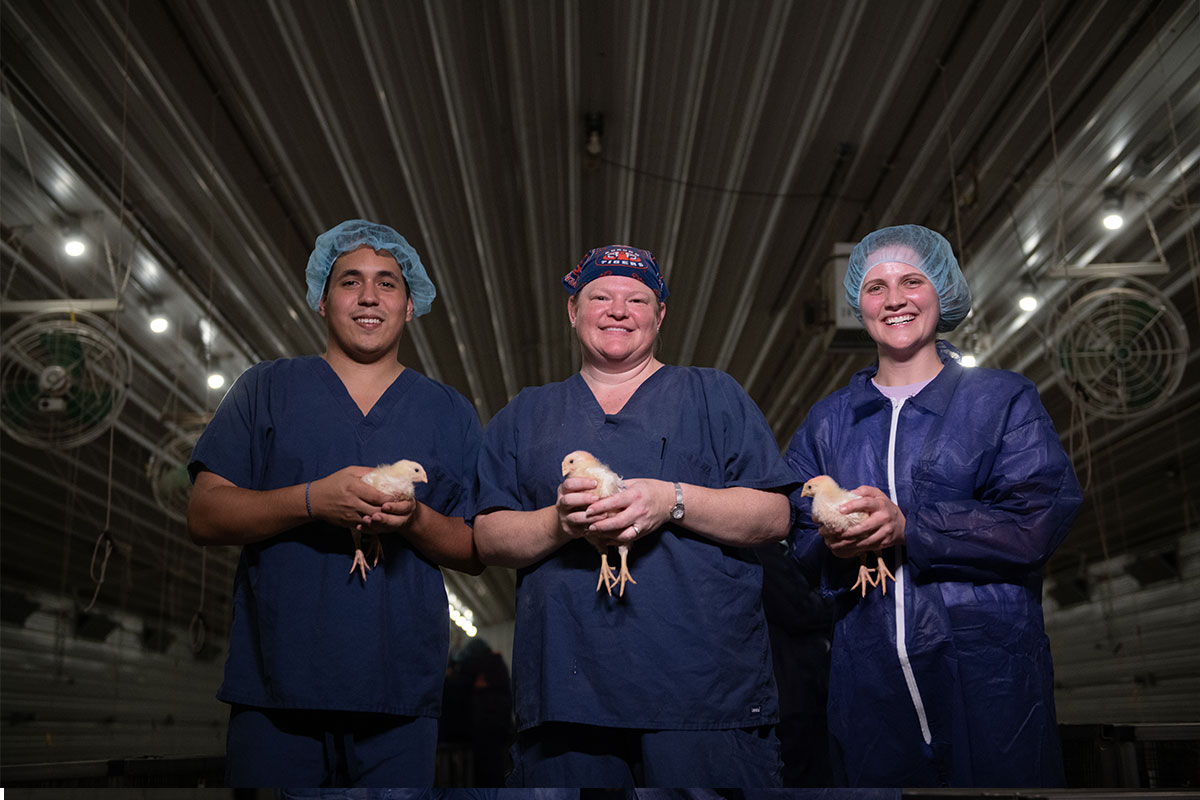
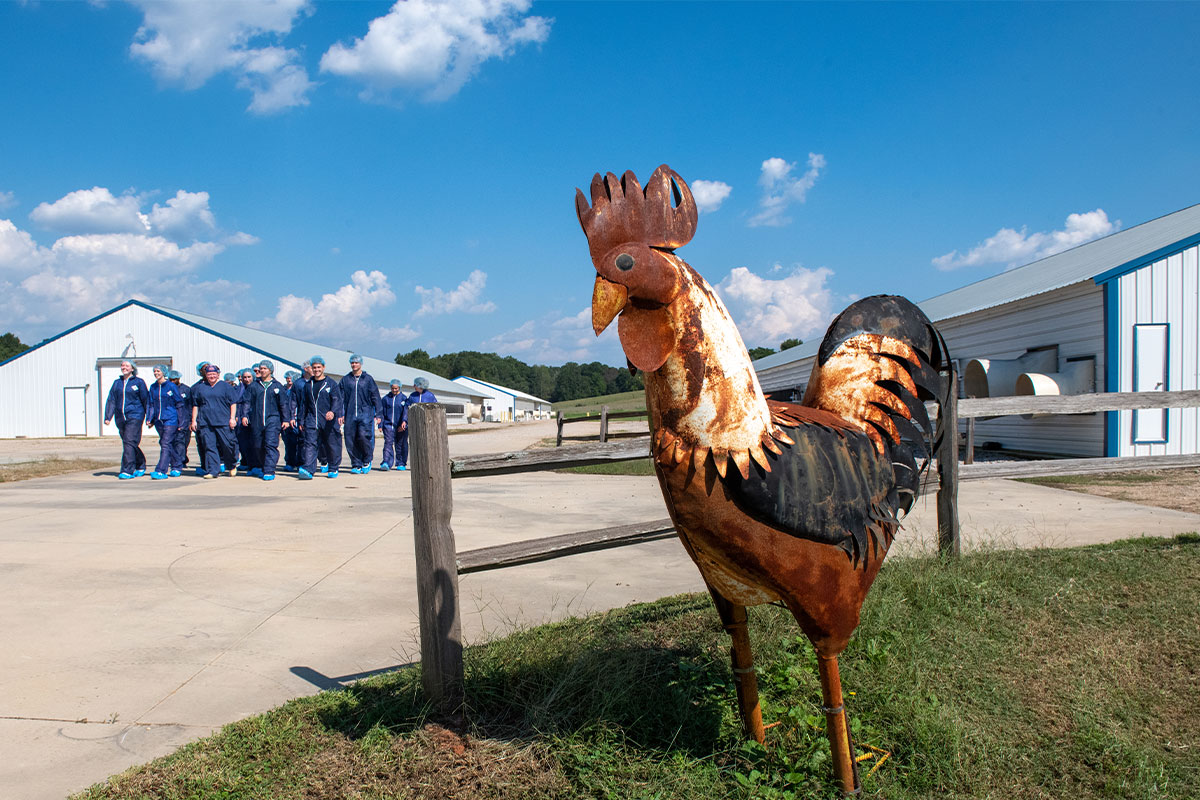
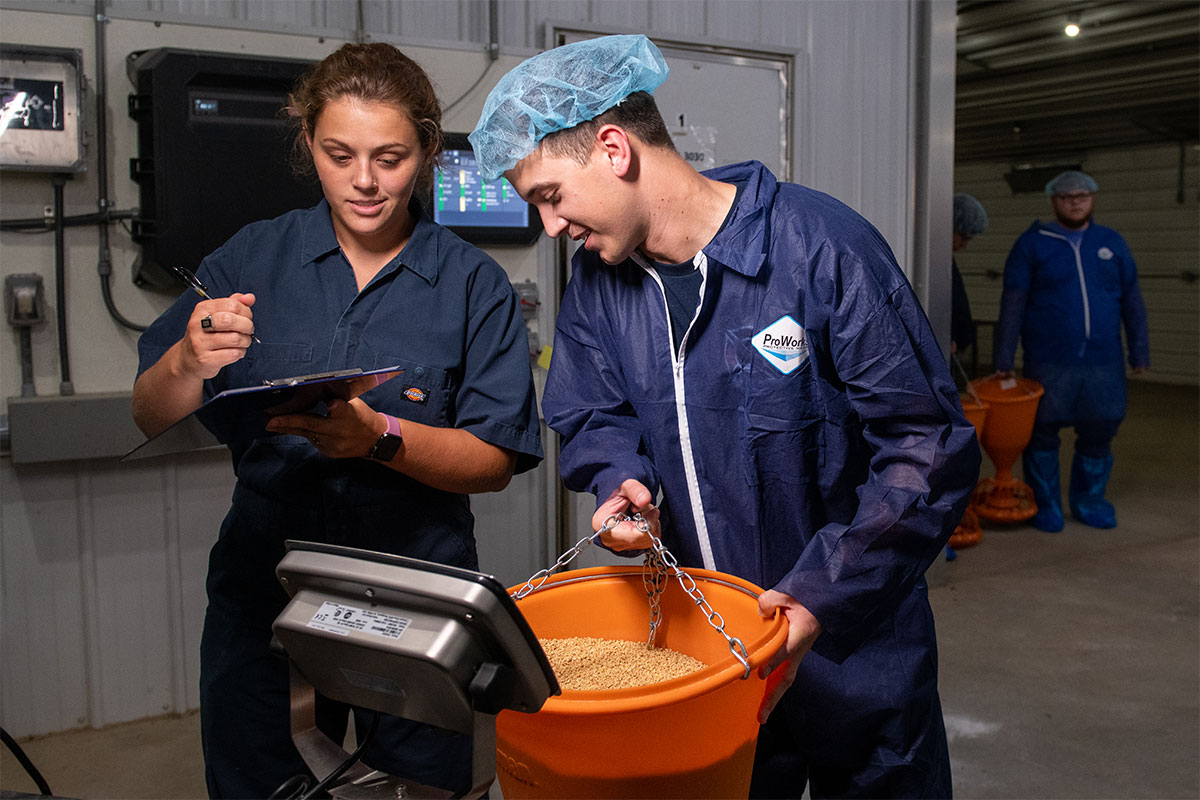
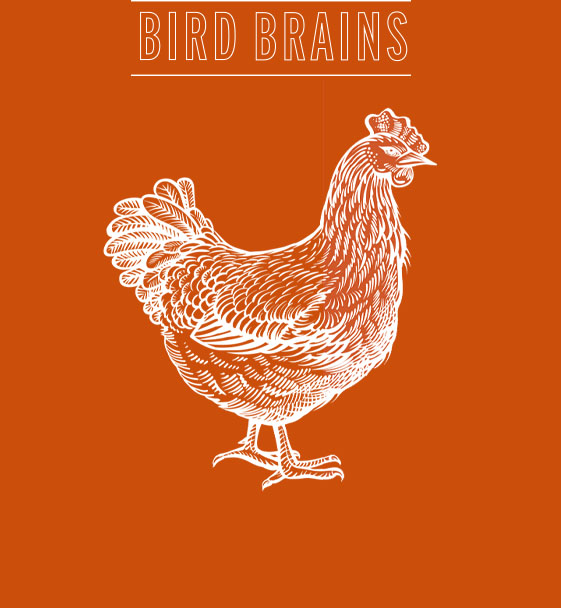
When new technology for chicken houses comes onto the market, the National Poultry Technology Center (NPTC) weighs in.
“We’re like the Consumer Reports for the poultry industry,” says Jeremiah Davis, director of the NPTC. “When a new technology comes out, the question from farmers is usually, ‘Well, has Auburn looked at it?’ Our goal really comes down to helping the farmers. If you have, say, $500, then where do you best spend it?”
Founded in 2007, the NPTC works to strengthen the poultry industry’s economic sustainability and efficiency, particularly for poultry houses and their associated technologies. The center examines new technologies and ideas, issuing recommendations about their use before they are widely implemented by chicken farmers.
An example: The NPTC advocated switching out light bulbs in chicken houses. With 50-60 lightbulbs in a single chicken house, changing 100-watt incandescent bulbs to energy-efficient LEDs saved a farmer $2,500 per house. A typical poultry farm has four houses, equaling $10,000 saved—a substantial amount in an industry with tight profit margins.
Other technologies the NPTC is currently developing or studying include smartphone apps that provide farmers the ability to calculate minimum ventilation run-times, models to estimate total farm water needs, tools to address farm water quality issues, and research into the quality of farm data being used in big data efforts.
It’s a far cry from the early days of the center, when founding director Jim Donald traveled to farms throughout Alabama with training equipment in the bed of his pickup truck. Now, at its state-of-the-art facility at the Miller Center, the NPTC annually hosts an average of 14 workshops focused on the latest farming techniques. Poultry farmers, service technicians and integrators come from across the Southeast to get this experiential training.
The NPTC’s educational work also includes Auburn students enrolled in the College of Agriculture, who take a semester-long class in poultry housing at the Miller Center. This experience helps the students stand out in the postgraduation job search: They are able to go straight into jobs as entry-level service technicians for poultry farms with the technical vocabulary and a solid foundation of housing management principles needed for success.
Building Hope: Disaster Relief Architecture & Design
Combining faith and design, disaster response architect Sarah Elizabeth Dunn ’03 builds shelters for disaster-stricken communities around the world.
Harold Franklin Reflects on Integration 50 Years Later
Fifty years ago, unsure of his safety, a tall, soft-spoken Black man walked alone across the Auburn campus to register for classes.
Auburn Love Stories: How They Met
From blind dates to football games to chance meetings in the classroom, Auburn alums reflect on how they found love and everlasting romance on the Plains.
Building Hope: Disaster Relief Architecture & Design
Combining faith and design, disaster response architect Sarah Elizabeth Dunn ’03 builds shelters for disaster-stricken communities around the world.
Harold Franklin Reflects on Integration 50 Years Later
Fifty years ago, unsure of his safety, a tall, soft-spoken Black man walked alone across the Auburn campus to register for classes.
Auburn Love Stories: How They Met
From blind dates to football games to chance meetings in the classroom, Auburn alums reflect on how they found love and everlasting romance on the Plains.
